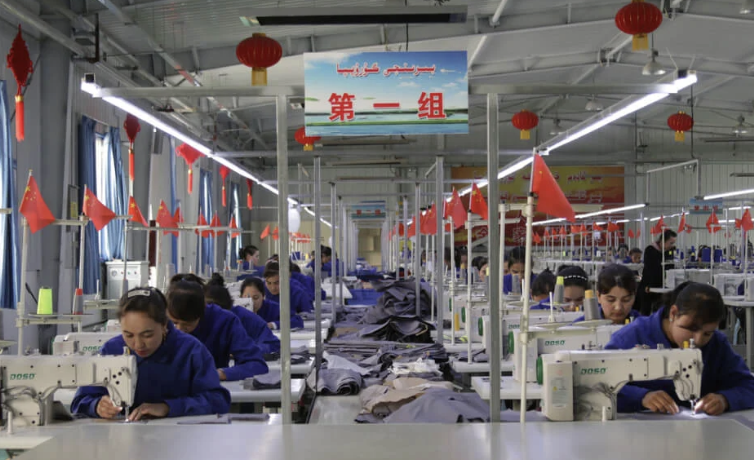
Chinese stocks soared last week after the central bank unveiled the largest stimulus plan since the pandemic.
The comprehensive stimulus plan includes a special sovereign bond issuance worth two trillion yuan ($284 billion) this year, while the central bank will cut reserve requirement ratios by 50 basis points, freeing up about 1 trillion yuan ($142 billion) for new credit, adding a property market support package with a 50 bps reduction on average interest rates for existing mortgages, and a cut in the minimum down payment requirement to 15% on all types of homes, according to Reuters.
This plan has been considered insufficient by some Western investment banks, citing the example of the Next Generation EU Plan as something to consider. Fascinating, considering the disastrous result of the EU plans since 2009.
Therefore, the Chinese economy does not need a European-style stimulus plan. It is already the second fastest-growing economy in the world after India.
It may be growing at a slower pace than expected, but that is mostly due to external factors like the German recession, trade barriers in the European Union and the United States and self-inflicted property market challenges that are a consequence of previous excessive stimulus plans.
Difficult balance
The measures announced last week could be interpreted as an admission of the risks of large-scale demand-side fiscal stimulus, constantly demanded by a financial market that seems to ignore the disaster that those government spending plans are inflicting on the United States and European economies.
The Chinese government seems aware of the negative side effects of succumbing to the temptations of replicating the European Union strategy of never-ending stimulus plans. These inevitably lead to stagnation.
This is why the package announced last week differs significantly from the Next Generation EU Fund or the U.S. Build Back Better.
The stimulus plan aims to both ease credit availability and prevent risk accumulation simultaneously
The Chinese central bank knows it will be difficult to restore the property market without sobering and healthy supply-side measures.
Therefore, the stimulus plan aims to both ease credit availability and prevent risk accumulation simultaneously. It is a difficult balance, but the Chinese central bank knows that the most dangerous policy would be to announce multi-billion-dollar demand-side policies that ended backfiring, debilitating the yuan, and increasing the national debt.
The Keynesian mistake
Western investment banks and economists are constantly demanding a bolder package from Chinese authorities. Why?
None of those specialists has to deal with the overcapacity and monetary consequences of what ends up being a reckless growth-for-growth-sake policy.
China must understand that the Keynesian policies’ siren call is the recipe for stagnation. Therefore, it must address the property market challenges with a different perspective to avoid falling into the Japan trap, especially when the demographic component of the economy is cooling off.
The Chinese technology, green energy, and high-added value sectors are growing at a spectacular pace. Do not let the overall GDP figure fool you.
Every seven years, China creates the equivalent of the entire European technology sector
Every seven years, China creates the equivalent of the entire European technology sector. Chinese authorities know that another misguided demand-side plan will bring higher inflation, a weaker yuan, and more overcapacity.
Spending unwisely may help bail out some equity investors in the West but one of those factors benefits the Chinese citizens.
When China looks at the future, it should consider the monetary and fiscal implications, but also the purchasing power of citizens’ wages and savings.
It needs to avoid the Keynesian mistake and strengthen its gold reserves to boost the currency reserve value while directing specific measures to support the population, avoiding the dangerous debt accumulation of the 2008-2018 period.
Relevant but not fatal challenges
China will be the first economy in decades to sail out of a property slump with no recession. This is proof of why the Chinese government should resist the temptation of spending its way out of an overcapacity problem.
Repeating past mistakes may be a hallmark of unwise decadent economies, and I would like to believe that the Chinese government will be wiser.
China is a rich country, and Keynesianism always impoverishes its citizens. That is a luxury that China cannot afford. Furthermore, if China is trying to strengthen the yuan as a world currency and reduce the U.S. dollar dependency, it must erase the demand-side government packages that some insist they should impose
The Chinese economy’s challenges are relevant but not fatal. It has already cleaned up almost all the risky real estate developers’ exposure and has been able to strengthen the balance sheet of the banking sector despite significant slumps in the value of some assets coming from the origination of risky loans in emerging economies as well as the previously mentioned large issuances of risky commercial paper of real estate developers.
No government spending plan is going to generate the kind of real-economic return, high-added value investment required by the Chinese economy to offset external risks created by slowing emerging market economic growth, especially the credit risks of credit origination in some African and Latin American economies that used Chinese credit to disguise their lack of fiscal and monetary responsibility.
With a strict supply-side growth strategy, China can grow faster and stronger. When some investment banks demand a large public spending plan, they are setting a trap that would send China into Japanese stagnation.
I know why European and U.S. Keynesian economists want China to repeat the mistakes of the past and the atrocious plans of the developed nations.
When these plans fail, they will inevitably argue that insufficient money was spent and that the same measures should be implemented again. The result of Keynesianism is stagnation, lower real wages, and impoverished citizens.
China needs to strengthen its middle class, not erase it. China does not need a European-style stimulus plan and should stick to strict supply-side prudent measures because that will be the only way to support the yuan’s purchasing power and make the middle class thrive.


